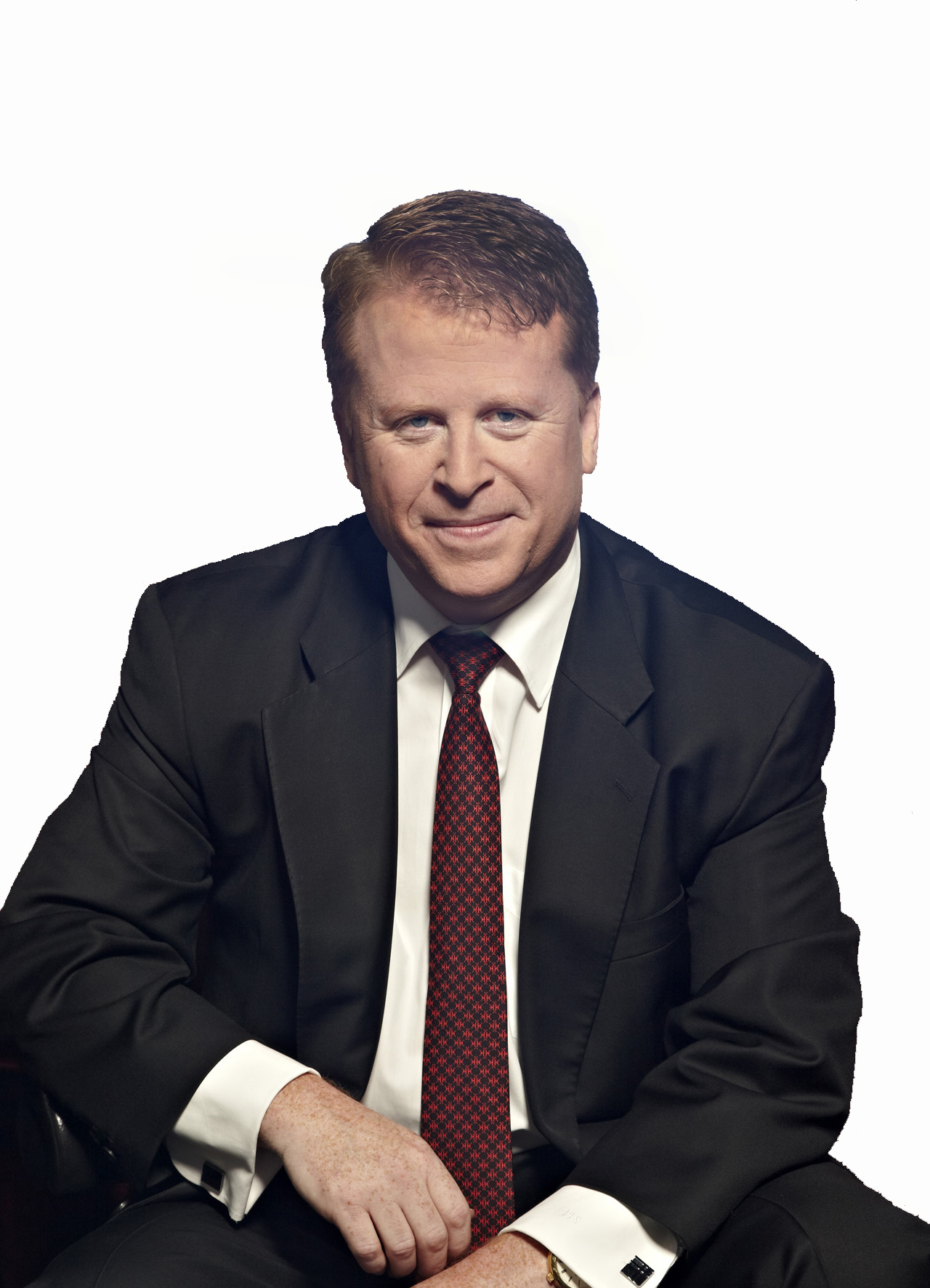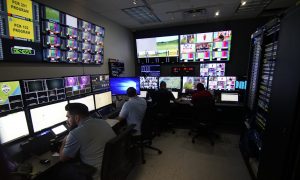SVG Sit-Down: NEP Group’s Brian Sullivan, VISTA Worldlink’s Josh Liemer on the Future of Remote Production
Acquisition of VISTA extends NEP’s capabilities for centralized workflows
Story Highlights
Earlier this month, NEP Group acquired South Florida-based VISTA Worldlink, a move that immediately expands NEP Group’s centralized remote-production footprint. NEP Group CEO Brian Sullivan and VISTA Worldlink President Joshua Liemer discussed the deal, how it fits into NEP Group’s broader vision, what it means to current VISTA clients, and more with SVG Editorial Director Ken Kerschbaumer.

NEP Group’s Brian Sullivan says the acquisition of VISTA Worldlink is a good fit for a number of reasons.
First, congrats on the deal. Brian, can you give some insights into the logic behind the deal?
Sullivan: Thanks! The reason for the deal is, we are about to go into a very active phase of building out centralized production capabilities and facilities throughout the U.S., and the addition of VISTA’s experience in remote workflows will help us get there better and faster. Josh and his team have done a tremendous job over the last few years in pioneering centralized broadcast solutions for customers in the U.S., and they’ve helped up-and-coming sports leagues grow by thinking digitally first.
It’s all very exciting, but it’s not an easy lift. To spin up a centralized production hub or spoke from scratch can take 12 to 18, maybe even 24 months, and there is a huge learning curve along the way. That’s why bringing VISTA into the NEP family was such an obvious fit. Their experience, along with ours across the globe — we already have substantial centralized production hubs in Australia, the Netherlands, Norway, Switzerland, and even a mini-hub in Washington, DC — will help us in our next phase of development here in the U.S. and around the world.
Due to the many benefits of centralized production — flexibility, scalability, faster technological innovation, efficient use of capital and resources, including people and talent, all of which have been proven pretty sharply over the last 12 months — we feel it is going to become an important part of the mix faster than many anticipated. As the global leader in broadcast solutions, we want to be there for our customers as soon as, if not before, they’re ready.
Here in the U.S., because the geography and clients are so spread out, we will initially establish our data centers, cloud capabilities, and connectivity to the network in one initial hub location. Then, we’ll have multiple connected spokes that are close to where the clients are located. Sometimes they’ll be dedicated to one specific client, and sometimes they will be open-market spokes that multiple clients can utilize. We should even get to a place where our mobile units, which will remain the cornerstone of the ecosystem, become a moving, connected part of this overall network, all seamlessly working together.
Ultimately, for us, it’s all about utilization. In the current model, you invest capital in fixed assets — trucks, equipment, studios, control suites, etc. — and use those assets 40%-50% of the time. The rest of the time they’re idle, either on the road or getting ready for the next production. If we do our job right, we can make sure assets are used more, potentially 80%-90% of the time, which is much more efficient for us and the client, allowing better utilization of talent for our customers and potential travel savings for them. That frees up cash to reinvest in content, talent, and innovation, and that is kind of the holy grail.
Why not build your own facility from scratch?
Sullivan: The people that were doing it best in the U.S. were VISTA, which we knew because we already worked with them. And it’s a lot easier to build from a kernel than it is to start from scratch. It’s also a lot easier to get up to speed with somebody who’s already operating in the market, knows its unique challenges, and is doing it at a very, very high level of expertise.
Having somebody on the ground here in the U.S. already serving customers is kind of a perfect way to get this thing started.
Miami also has a great connection to the rest of the Americas. Do you see an opportunity there as well?
Sullivan: Absolutely. There are a lot of unique aspects that made bringing VISTA into the NEP family beneficial well beyond the initial business case. They also have clients all over Europe, and they’ve got great experience with connectivity, which is going to be one of the critical skills in the future. Working with high-bandwidth, low-latency connectivity is critical to centralized broadcast solutions.

NEP Group will leverage VISTA Worldlink’s transmission and connectivity expertise to move into centralized remote production.
Liemer: For VISTA, the foundation we built our business on was transmission and having connectivity throughout the world. Part of our legacy has been connecting the dots and bringing in signals, and, when we pivoted hard into the centralized broadcast workflows, that kind of conductivity expertise was key to getting us started.
And now it is not only various media solutions that we’re providing but also the expertise and understanding of how to deliver this day in and day out at a very high volume. We’re very excited to join the NEP family and have more resources, more assets, and more technical talent around us to help us further evolve and grow into the future.
Can you talk more about the move to centralized operations?
Sullivan: I think the speed at which we’re going to build up our capabilities is going to surprise the marketplace. We already have people going around the U.S. looking at various locations and options for data-center capabilities for our backbone, to which we will then build and connect a network of client-facing spokes. I think we’re probably going to have at least one, if not two, up and running within 12 months here in the U.S. And I think it could reach four or five within 2½ to three years. The plan is to have the general geography covered and availability for any customer wherever and whenever they need it.
The investment model will be slightly different as well. The broadcast-solutions world tends to deploy capital to match up the specific needs for a particular contract. We’re adding a new layer, deploying some capital in front of the client’s needs. It’s a little riskier, but, if we get it right, it will help drive innovation and deploy new options for customers at a much quicker pace than what we’re used to in the industry. We’re very lucky that we’re in a strong place financially, and we feel like now is the right time to get moving.

VISTA Worldlink’s Josh Liemer says current clients will benefit from VISTA’s becoming part of the NEP Group.
Josh, I am assuming your current customers are wondering what this deal means for them. Walk us through how this impacts them.
Liemer: Our clients have been something that we were very sensitive about from our first conversations with NEP. VISTA has always been client-facing and customer-service–based. That’s VISTA’s DNA and the very fabric that our company has been built on. Servicing and providing solutions to our customers was always first and foremost. Since the acquisition, conversations with customers have been very exciting, and it’s positive affirming that we’re going to continue to deliver solutions and excellent customer service every day. Moreover, we’re now going to have additional resources, assets, and talent behind us by joining the NEP family.
Over the years, NEP’s team has been almost a secret weapon for us, and they supported us incredibly. We always brought NEP in when things were mission-critical, and they were consistently there to support us.
VISTA has existing clients. Will you expand the physical presence and capabilities of VISTA to allow more clients to be served?
From the client perspective, VISTA plays in a different space than the rest of NEP, and that’s a great opportunity. Through the combination of companies, we can bring a huge array of solutions that are available to the market that we didn’t necessarily tap into.
This is not a formulaic acquisition. This is a strategic acquisition. And, because of that, the sky’s the limit for us and what we think are the best opportunities to go after. We now have the resources to invest, not just into the purchase but into the business.
Looking forward, what do you see as the mix of centralized facilities and trucks?
Sullivan: To be honest, I think mobile units will remain the cornerstone of the industry but will become part of a wider, more dynamic network, including connected centralized-production capabilities, and will constantly evolve to bring new, exciting products and solutions to life for customers. We get our highest utilization out of our hubs around the world, which all include mobile units as part of the mix. It’s up to what the client needs for a specific project. But the key is utilization: it is what turns to profit, and profit is what turns to cash to invest back into the business.
We’re still going to be building trucks, and they will be the most advanced trucks in the world. But those trucks will all be IP-based, and they will all have the ability to plug into the NEP global network that we are designing right now.
Effectively, over time, they become a portable version of a spoke. And they will probably cost a little less too because, if you have the right centralized production network built, you don’t necessarily need everything on the truck that you use.
Ultimately, if you have confidence in your people and the direction the industry is moving, then it’s all pretty logical. It’s not like we see something no one else does, although I’d put our engineers and technicians up against anybody’s. We’re just trying to get there faster and better than everybody else.
